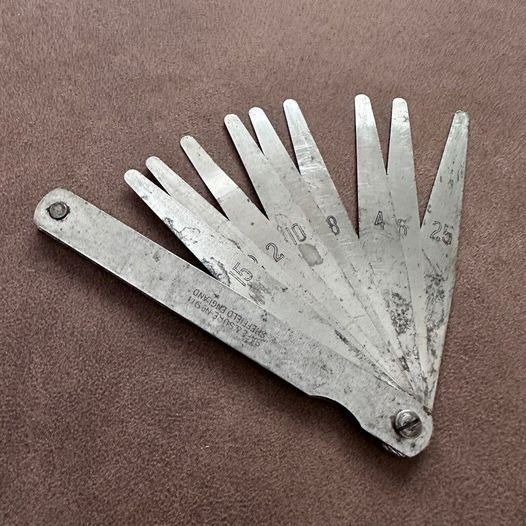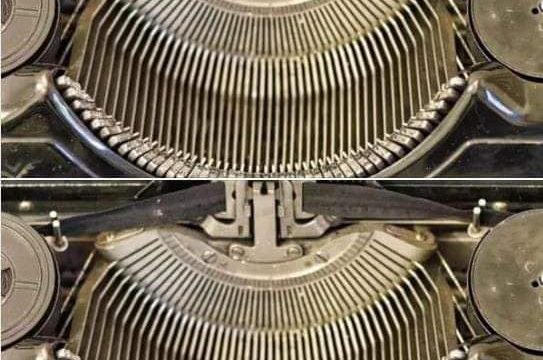A Nostalgic Look at Precision Engineering
Do you remember the days when tools were built to last, crafted with precision and designed for longevity? The early 20th century introduced many groundbreaking innovations, but one small yet powerful tool remains an unsung hero in the world of mechanics and engineering: the vintage feeler gauge. This simple but indispensable device transformed the way professionals measured tiny gaps with remarkable accuracy, setting the stage for modern precision tools.
What Is a Feeler Gauge?
A feeler gauge is a collection of thin metal blades, each meticulously calibrated to a specific thickness. Though it may appear unassuming, this tool has played a vital role in countless industries. Mechanics, machinists, and engineers have relied on feeler gauges for over a century to ensure that machine components fit together with absolute precision. By sliding the correct blade between two surfaces, they can measure clearance gaps to exacting standards, preventing mechanical failures and optimizing performance.
The Beauty of Simplicity and Versatility
The design of the feeler gauge is a testament to the power of simplicity. Unlike complex electronic measuring tools, this device requires no batteries, screens, or digital interfaces. Instead, all it takes is selecting the right blade and inserting it into a gap. Within seconds, you have an accurate reading—no fuss, no errors. It’s like a Swiss Army knife for measurements, offering a practical and efficient solution for tasks ranging from automotive maintenance to industrial machinery calibration.
Another advantage of the feeler gauge is its versatility. Whether adjusting engine valves, setting spark plug gaps, or calibrating delicate machinery, this tool delivers precision without the risk of digital malfunctions. Even in today’s high-tech world, many professionals still prefer the reliability of a traditional feeler gauge over digital alternatives.
A Tool That Stood the Test of Time
Despite the advent of laser measurement tools and digital calipers, the feeler gauge’s fundamental design remains relevant. It has inspired generations of engineers to prioritize accuracy, ensuring that even the most intricate components align perfectly. Modern measurement instruments, including digital thickness gauges, still adhere to the same core principle—using thin, precise elements to gauge gaps with extreme accuracy.
While technology has evolved, the legacy of the feeler gauge is evident in contemporary tools. It serves as a reminder that some of the best engineering solutions are also the simplest.
A Collector’s Dream
Interestingly, old-fashioned feeler gauges have become highly sought-after by collectors and vintage tool enthusiasts. Their appeal isn’t just about functionality—it’s also about craftsmanship, durability, and historical significance. Many antique tool collectors take pride in acquiring well-preserved sets, admiring the ingenuity of early 20th-century engineering.
Some collectors even go as far as restoring old feeler gauges to their former glory, showcasing them as valuable artifacts of mechanical history. If you ever stumble upon a vintage set in a garage sale or antique shop, don’t overlook it—you might just be holding a rare piece of engineering history!
A Teaching Tool in Engineering Education
Beyond being a collector’s item, feeler gauges continue to serve as valuable educational tools. In technical schools and engineering programs, these instruments are used to teach students the fundamentals of precision measurement. Their hands-on nature allows learners to grasp the importance of accuracy and mechanical alignment in a tangible way.
Aspiring engineers and mechanics gain a deeper appreciation for the craftsmanship involved in manufacturing and machine maintenance. By mastering the feeler gauge, they develop skills that remain essential, even in an era dominated by digital technology.
The Lasting Legacy of the Feeler Gauge
The impact of the vintage feeler gauge extends far beyond its modest appearance. It has played a crucial role in industries such as automotive repair, manufacturing, and machinery maintenance. Its enduring relevance highlights the timeless value of accuracy in engineering and the power of well-designed tools.
While digital innovations continue to shape the future, the feeler gauge stands as a testament to the ingenuity of past generations. It reminds us that sometimes, the simplest solutions are the most enduring. Whether in the hands of a seasoned mechanic, a curious collector, or a student learning the ropes, this classic tool continues to make its mark.
Conclusion
The vintage feeler gauge is more than just an old-fashioned measuring tool—it’s a symbol of precision, reliability, and innovation. From its humble beginnings to its role in modern engineering, it has remained a trusted companion for those who demand accuracy. Whether you use one professionally or simply appreciate its historical significance, the feeler gauge is a true icon of mechanical craftsmanship.
So, the next time you see one of these classic tools, take a moment to appreciate its legacy. After all, great engineering doesn’t just shape the past—it paves the way for the future.






